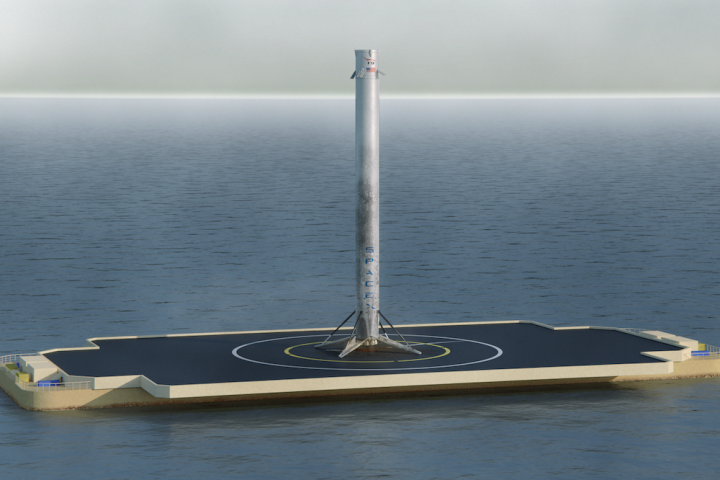
UPDATE 2/10/2015: After postponing the launch date twice over the past two days, SpaceX is ready to give it another go. The original launch attempt was pushed from Sunday to Monday because of transmitter problems and a failure in the Air Force’s tracking radar, and Monday’s launch was postponed due to weather. The official launch date is now set for Tuesday, February 10 @ 6:10 ET. SpaceX’s live coverage of the launch will begin at 5:45 pm eastern.
It hasn’t even been a full month since SpaceX tried (and failed) to land one of its rockets on a floating lander pad in the Atlantic ocean — but it’s already prepared to give it a second shot.
This Sunday, just after sunset, at approximately 6:10 ET, the company will launch a 22-story-tall Falcon 9 rocket from Cape Canaveral Air Force Station in Florida. About a half hour later (assuming the takeoff goes smoothly), the rocket will return from space and attempt to land itself on an autonomous, self-stabilizing ocean platform.
If the landing is a success, it’ll be a massive achievement for SpaceX, and a landmark moment for space travel in general. The ability to land and reuse rockets would drastically lower the cost of space travel, and likely usher in a new era of exploration and technological advancement.
Unfortunately we won’t be able to watch the landing as it happens, but NASA does plan to livestream the takeoff from Cape Canaveral starting at 3:30 ET. We’ve embedded the stream below.
Even if SpaceX botches this landing, and the mission ends in a fiery explosion just like it did the last time, it’s not the end of the world. The company has at least a dozen more launches planned for 2015, so it’ll have plenty of other opportunities to get it right.
The ocean landing attempt isn’t the only exiting part about the launch, either. For this mission, the rocket will be carrying an instrument designed by the National Oceanic and Atmospheric Administration to monitor solar winds. Once in place, the Deep Space Climate Observatory (DSCOVR) will act as an early warning system of sorts, and let us know when waves of high-energy radiation are headed for our planet.
We’ll keep this post updated with any new developments, so be sure to check back for updates.



